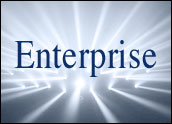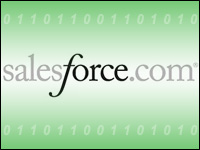
How do SOA (service-oriented architecture) and Web 2.0 services come together?
Are we entering an era where a variety of business services from a spectrum of sources contribute to and perhaps dominate new business process aggregation?
If so, won’t that require a level of governance to protect enterprises from flighty Web-based services, while still allowing a thousand ideas for business mashups to blossom?
Wouldn’t trusted providers of Web services — Amazon, Google, Salesforce.com, Yahoo, RealNetworks, Windows Live and eBay/PayPal, et. al. — constitute a form of mashup governance by making their offerings mission critical, in effect engaging enterprises based on trust, compelling value, customer service and ease of integration and use?
Join noted IT analysts Steve Garone, Joe McKendrick, Tony Baer and Jim Kobielus, as well as SOA consultant guest Dave Linthicum of Linthicum Group, for a discussion of these topics, hosted and moderated by me, Dana Gardner.
Our panel discussion also parses the ramifications of the recently proposed US$3.3 billion deal for Oracle to acquire Hyperion, and digs into what the combined entity means for business intelligence (BI) and corporate performance management (CPM). Our analysts and guests have some unconventional and startling conclusions, as well as thoughtful insights.
Here are some excerpts:
On SOA, Web 2.0 Business Services and Mashup Governance
Dave Linthicum: Mashups and SOA are coming together. … As people are becoming very active in creating these ad-hoc applications within the enterprise, using their core systems as well as things like Google Maps and the Google APIs, some of the things that are being sent up by Yahoo, Salesforce.com and all these other things that are “mashable.”
There’s a vacuum and a need to create a governance infrastructure to not only monitor-track, but also learn to use them as a legitimate resource within the enterprise.
Right now, there doesn’t seem to be a lot of thinking or products in that space. The mashup seems to be very much like a Wild West, almost like rapid application development (RAD) was 15 years ago. As people are mashing these things up, the SOA guys, the enterprise architecture guys within these organizations, are coming behind them and trying to figure out how to control it.
You really need a rudimentary notion of governance when you deal with any kind of application or service that works within the organization … [It’s] about a technical infrastructure to monitor-control the use of services. Not only is it about control, but it is about productivity. I can find services. I can leverage services, and they are managed and controlled on my behalf. So, I know I am not using something that’s going to hurt me. The same thing needs to occur within the mashup environment.
Jim Kobielus: The whole notion of mashups is halfway to anarchy, as it were, creative anarchy. In other words, empowering end-users, subject-matter experts or those who simply have a great idea. They typically slap together something from found resources, both internal and external, and provision it out so that others can use it — the creative synthesis.
This implies that governance in the command-and-control sense of the term might strangle the loosey-goosey that laid the golden egg. So, there is that danger of over-structuring the design-time side of mashups to the point where it becomes yet another professional discipline that needs to be rigidly controlled. You want to encourage creativity, but you don’t want the mashers to color too far outside the lines.
Dana Gardner: Your existing policies and access privileges, your federated ID management brought up into a policy level — that will all play into this and it could help mitigate this concern around the right balance. … I was thinking about the adage that nobody was fired for using IBM, which was a common saying not that long ago. What if we were to take that same mentality and apply it here — that if you’re going to do mashups, make sure they are Windows Live mashups, or Google mashup services, or maybe Salesforce.com.
Kobielus: What’s going to happen is that the users are going to do this through a brokerage — guys like Google. I don’t think Google is going to take a whole lot of money. They’re going to take the normal pennies per transaction, and you will see millionaires that are made in a few months — people who are able to send up killer services that Google and guys like StrikeIron are able to broker out to those who are setting up SOAs.
Then, suddenly, they are going to find themselves a hit, very much like we’re seeing the Web 2.0 hits today. … We have Google AdWords and AdSense. So, soon we should have “ServicesSense”?
On the Oracle-Hyperion Deal
Kobielus: [Oracle CEO] Larry Ellison has been very willing in the past to grab huge amounts of market share by buying direct competitors like PeopleSoft, Siebel and so forth, and managing multiple competing brands under the same umbrella — and he is doing it here. A lot of the announcement from Oracle regarding this acquisition glossed over the fact that there are huge overlaps between Oracle’s existing product lines and Hyperion’s in pretty much every category, including the core area that Hyperion is best known for.
Hyperion is a big BI vendor as well, and Oracle has just released an upgrade to its BI suite. You can go down the line. They compete in master data management (MDM) and data integration, and so forth. The thing that Oracle is buying here first and foremost is market share to keep on catapulting itself up into one of the unchallenged best-of-breed players in business intelligence, CPM and so forth.
It’s a great move for Oracle, and it definitely was an inevitable move. There will be continuing consolidation between the best-of-breed, pure-play data management players, such as Hyperion and a few others in this space, which are Business Objects and Cognos. They will increasingly be acquired by the leading SOA vendors.
Steve Garone: This is less about database and more about middleware and Fusion and building up that software stack. Oracle has clearly got an eye on doing that. It’s really about their bigger picture of taking what Oracle calls Fusion middleware out beyond just middleware to the applications themselves, and essentially creating an entire integrated stack of software.
Tony Baer: Analytics is the necessary icing on the cake. All the other pieces tell you what you are doing, and the classic question of analytics tells you why. A lot of folks look at this as an extension to the database business. I see this as an extension of the applications business.
[The deal] puts some pressure on SAP. I wouldn’t be surprised to see them make the play for one or the other two big remaining ones. I also expect IBM to play in there, because even though IBM says it’s not in the apps business, the fact is that they do have products like master data management.
What’s really ironic about all this is that years ago, IBM and Hyperion had actually had a very close relationship, and it was bordering almost on acquisition. I’m surprised that IBM actually never went the last mile and acquired them. It would make sense for them to make a move with one of the other players today.
Dana Gardner is president and principal analyst at Interarbor Solutions, which tracks trends, delivers forecasts and interprets the competitive landscape of enterprise applications and software infrastructure markets for clients. He also producesBriefingsDirect sponsored podcasts.















































